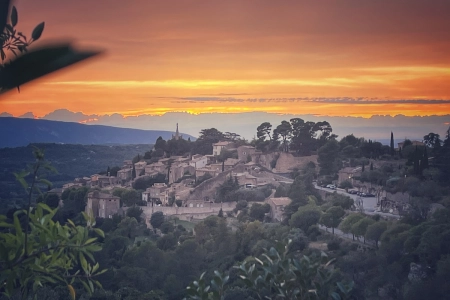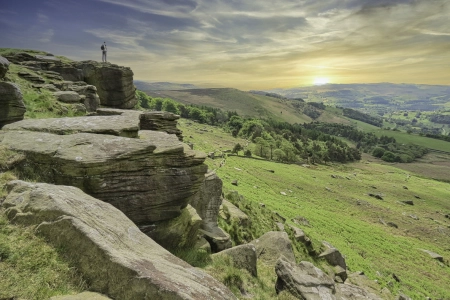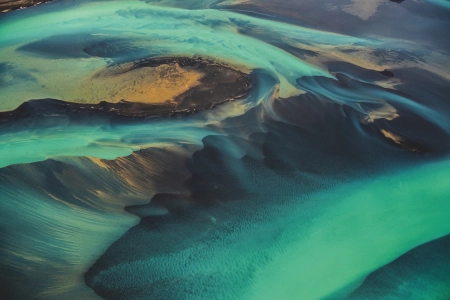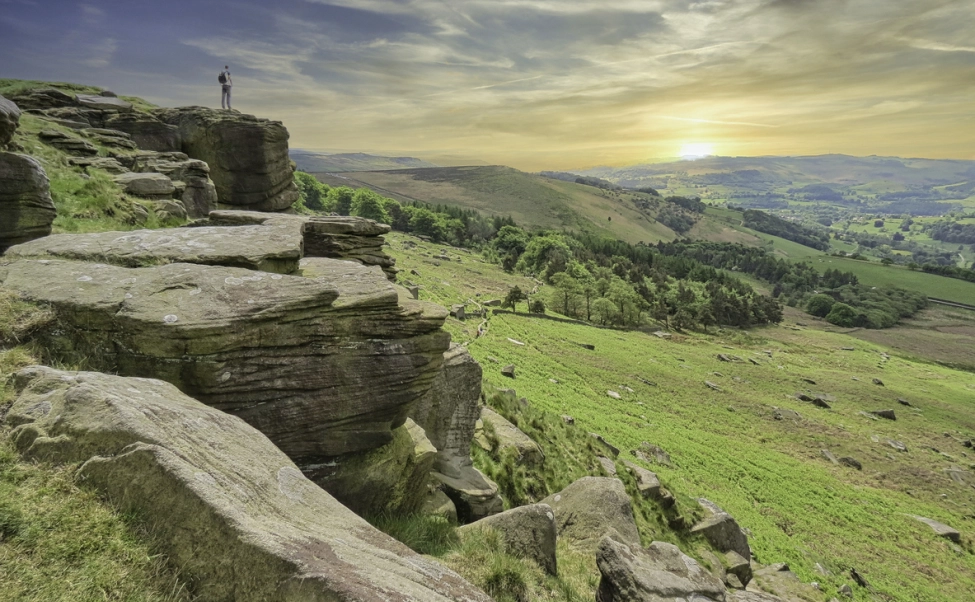- Details
- Written by: Dan Wildey
East of the resort town of Roses on the Cap de Creus, a peninsula on Catalunya’s Costa Brava, the tarmac runs out. If you carry on down the dirt track for another six kilometres, however, you end up in a little slice of paradise. Hidden deep within an isolated cove, there are a handful of buildings which constitute the “village”, and a single hotel situated right on the beach: The Hotel Cala Joncols. Arriving at the end of a long day’s travelling, I could hardly believe my luck.
I was here to try and get a different perspective on one of Spain’s most famous tourist regions, exploring the Costa Brava by land, sea, and air. This secluded gem would be my base for the first part of the trip.

“It’s like an island,” says Michael Gomez Fernandez, the third-generation manager of the Cala Joncols, as he showed me around. The bay is spectacular—a white sandy beach descends towards clear blue waters, flanked by craggy cliffs. But Micheal explained that the hotel’s remote location has practical implications too, and had helped them take radical steps towards making their operation more sustainable. “We try to disconnect ourselves from the local authorities,” he said. “We are not taking resources from the mains water supply, for example.
We also cancelled our bin collection and we now process all our own waste.” Guests may not notice these behind the scenes efforts, but they’ve not gone unrecognised. Cala Joncols is in fact the first hotel on the Costa Brava with Biosphere Certification. It makes sense that Michael and his team take the environment seriously—the outdoor activities they offer are a huge part of the hotel’s appeal. The Casa Joncols has its very own dive centre, and after getting kitted out, we headed out to explore the clear waters of the bay.

Scuba diving: Altitude, -10m
Unfortunately, the bay had other ideas. “Nautiluca,” said Mouhssibn Bekour Jebban, my diving instructor, pointing. “The most dangerous jellyfish in the Mediterranean.” Following his finger, I could make out several of the bright pink and purple creatures. But as I flapped my fins around in the water’s edge the pops of colour jumped out more and more frequently, and we began to realise there were just too many to swim—an unnavigable barrier in front of us.
“Once a small nautiluca got inside the tube of my snorkel,” Mouhssibn told me. “My lips looked like I’d had botox.” There would be no diving today.

Given the danger the jellyfish presented, I wasn’t too disappointed when we decided to cut our losses and return to the hotel—especially when I saw what had been laid on for lunch: tuna tartare with radish and wasabi, plus pear wrapped in bacon, followed by pork rib and a chocolate fondant. The food was delicious, and almost all locally sourced, Michael said. Sixty percent of the vegetables come from the hotel’s own garden, and the family make their own olive oil from their own olives. But it’s their wine production that is perhaps the most remarkable.
As part of the drive towards self-sufficiency Michael has planted 450 vines along 4km of restored terrace, all of which is fertilised with compost made from the hotel’s bio waste. These vineyards now produce around 1,000 bottles a year, some of which are matured in a secret location under the sea. This allows the bottles to micro-absorb different minerals through the cork, and the waves keep the wine in constant gentle motion whilst it ages. The white I was served was soft but complex, and the pure theatre of barnacles dropping from the bottle as it was opened was a unique joy.

Kayaking: Altitude, 0m
Sea kayaking was next on my agenda the following morning. Led by guide Pau Calero, I paddled out to get another look at the rocky cove from exactly zero metres above sea level. A couple of hundred metres out from the beach the previous day’s bloom of a few dozen nautiluca revealed itself to be a swarm of thousands. There were clusters floating together on the surface, their heads looking like large bubbles just breaking through to the air. Also floating on the surface were salps: transparent chains of beings with shapes varying from strings of see-through pearls to glassy slices of calamari. I felt as though I’d been shrunk down to microscopic size and been dropped in a petri dish alongside the tiny building blocks of life.

I should point out—not least for those who like their sea swimmable—that this number of jellyfish is rare. In fact, their arrival subsequently made the national news. Drought had meant a reduction in the freshwater flowing from rivers, which normally creates a freshwater barrier that jellyfish don’t enter. More recently, rain and wind had stirred up the tiny organisms in the water on which the jellyfish feed. But climate change also had a role to play, with the increasing sea temperatures apparently causing all manner of strange sea creatures to head into the shallows. The previous day, I’d seen a purple high-tide line of thousands of dead Sailors on the Wind (another jellyfish-like creature) and the rubbery and fantastical glass-slipper remains of several Sea Butterflies—also known as the Swords of Venus.
“Salvador Dalì spent time exploring this coastline as a child, and took inspiration from its strange rock formations”
Looking at their swirling forms, I couldn’t help but think of the work of Cap de Creus’ most famous son, Salvador Dalì. He was born in nearby Figueres, and spent time wandering around the peninsula’s natural park as a child, drawing on its strange rock formations—and, perhaps, its spectacular sea life—for inspiration.

Hiking: Altitude, 912m
The town of Ribes de Freser in the foothills of the Catalan Pyrenees has been popular with tourists for over a century—ever since a rack railway was opened to take wealthy weekenders up from Barcelona up to the ski slopes of Vall de Núria. More recent developments include a via ferrata route, the Roca de la Creu, which starts a stone’s throw from the centre of town.
It was here that I met Esteve Carbones and Raquel Prat from the local guiding outfit Guies Ama Dablam, who were going to treat me to a unique, cliff-side view of this historic hub. The first 50 metres of the climb involved a very steep ladder stapled into the rock—an effective way of preventing less confident climbers from proceeding, I thought. But there was too much to look at to really be scared of heights. For a short via ferrata, this has everything—three bridge sections, long traverses, mini summits, physicality and technicality to spare.

After a tasty lunch at Els Cacadors restaurant, which included a salad made from Xicoia, a dandelion variant foraged from beneath the snow in the highest reaches of the mountains, we rode the old rack railway up to Vall de Núria. Architecturally, the resort definitely wont be winning any awards, but it offered access to a beautiful cirque of mountains, and the surrounding wilderness. Within ten minutes of hiking from the station we’d seen groups of chamois, plus several sleepy marmots just emerging from their winter hibernation.

Hot Air Ballooning: Altitude, 2,000m
Between the coast itself and the Pyrenees lies the Parc Natural de la Zona Volcanica de la Garrotxa, a protected area containing some forty extinct volcanoes. Although there hasn’t been an eruption here for around 11,000 years, the area is still seismically active, and the landscape—basalt columns, red earth and massive craters—is incredibly dramatic. I started off by hiking through the Fageda d’en Jorda, a verdant beech forest that’s grown up out of the mineral-rich lava, with Beth Cobo, a local ecotourism guide. Because the rock beneath our feet was so porous, she explained, only trees with deep roots could thrive. That meant there was very little undergrowth—just endless lines of straight trunks, thrusting towards the sky. I found myself wondering what they’d look like from above—and I didn’t have to wonder for long.

I’d never been in a hot air balloon before, but rising gently from the shadow of a densely forested hillside it became clear I’d picked the right place to try it. The morning sun caught the emerging greens of spring and strengthened the shadows cast by the hulking forms of the volcanoes themselves. We cruised over intact craters and a partially-collapsed cinder cone, lying in ruins like the remains of an ancient amphitheatre. Beneath us, I could see the full extent of the forest, mapped onto the path of the lava flow.
Balloon travel is at once totally unnatural and entirely peaceful. At around 2,000 metres, we hit a maximum speed of 24 km/h—considerably less than the UK’s minimum speed limit. It felt more like hanging in suspended animation than flying. Looking east, I could see the sun reflecting off the Mediterranean, and could even make out the half-moon bay of Roses where my journey had begun. To anyone on the ground, our balloon, with its trailing cables and hanging basket, must have looked a little like the jellyfish I’d encountered. From seeing their bulbous forms underwater, to climbing up among the snow capped peaks, I’d seen the Costa Brava from all angles. But from up here, I could see there was still so much more to explore.

Know How
Our trip
Dan’s trip was supported by Costa Brava and Girona Pyrenees tourist board who provide adventure inspiration, information and booking links on their website.
Getting there
Various airlines fly to Girona and Barcelona from airports throughout the UK and Ireland, such as easyJet, Ryanair and Vueling.

Guides & activities
Diving and snorkelling at Cala Joncols is provided by Euro-Divers and kayaking was guided by SK Kayak. Both can be booked via the hotel, or via their respective websites.
The hot air balloon ride was organised by Vol de Coloms at their purpose built centre in Garrotxa and the hiking around the area was guided by Beth Cobo of Trescalia.
Guiding on the via ferrata and the Vall de Núria hike was provided by Guies Ama Dablam.

If this extensive range of activities isn't ticking your boxes then maybe the region's cycling offering will. The 340km circular Pirinexus route takes in a great deal of the locations we've covered here, and links everything via greenways, forest tracks and quiet roads. For those that crave the gravel there is an exciting recent development in La Jonquera called Gravelera.
The project is aimed squarely at the gravel biking boom and takes a route from the foothills of the Pyrenees out to Cap de Creus on the Costa Brava coast. The route is split into two stages of 81km and 87km respectively, with the first taking you from La Jonquera itself through cork forests, past historical Dolmens (an impressive type of ancient tomb) and through two natural parks. Stage two includes a more thorough exploration of the Cap de Creus Natural Park and adds a third in the shape of Aiguamolls de l’Empordà Natural Park.
Where to stay
Daniel stayed at the Cala Joncols Hotel, the Cal Sastre in Santa Pau and the Resguard del Vents spa hotel.














